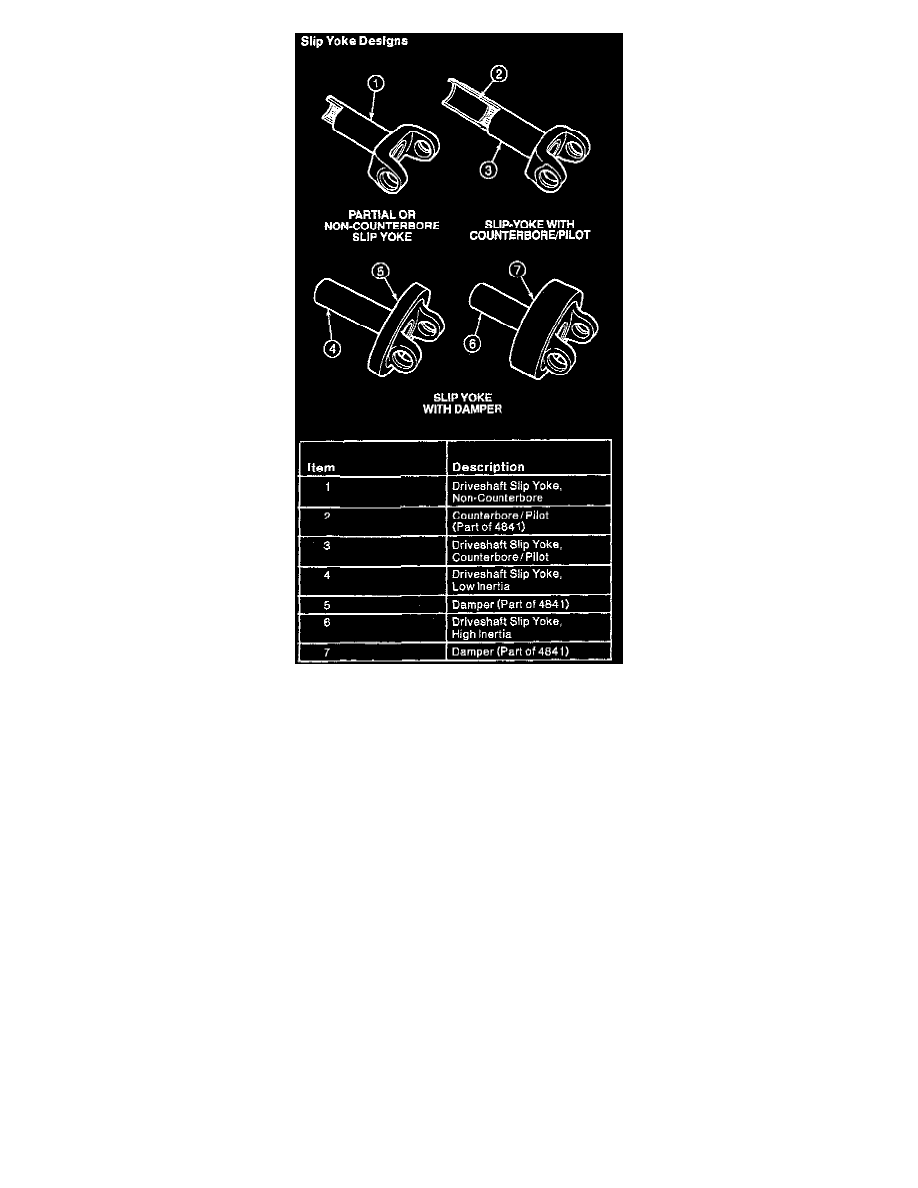F 350 2WD Pickup V8-460 7.5L VIN G EFI (1997)

Some vehicles use a one-piece steel or aluminum slip-yoke type driveshaft. A universal joint and splined driveshaft slip yoke are located at the
transmission end of the shaft, where they are held in alignment by a bushing in the extension housing. The splined driveshaft slip yoke and transmission
output shaft allow fore and aft movement of the driveshaft as the rear axle moves up and down with the rear suspension. This provides smooth
performance during vehicle operation. An oil seal at the transmission prevents leakage and protects the driveshaft slip yoke from dust, dirt and other
harmful material. A rear universal joint attached by either two U-bolts or two straps and four nuts is used where the driveshaft mates with the rear axle
universal joint flange at the rear axle.
Others use a coupling shaft in conjunction with a driveshaft. Care must be taken to align the driveshafts as shown in the illustrations. The two-piece
driveline system incorporates a "necked down" coupling shaft stub with a blind spline feature, which ensures positive phasing action.
All two-piece driveline vehicles are equipped with driveshaft center bearing supports that are prelubricated and sealed for the bearing life.
All universal joints are of the lubed-for-life needle-bearing type except. Replacement universal joints equipped with grease fittings should be lubricated
at the maintenance schedule booklet. The universal joint bearings are retained on the spiders by snap rings and U-bolts on some applications.
The driveshafts are balanced; therefore, if the vehicle is being undercoated, the driveshafts and all open spline areas must be covered to prevent
undercoating material from getting on the driveshafts.
Two types of driveshaft connecting joints are available on different vehicles:
-
single Cardan universal joint
-
double Cardan universal joint
